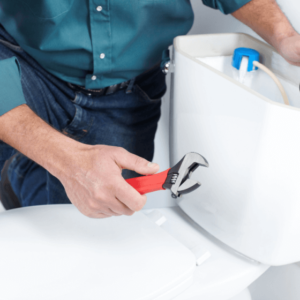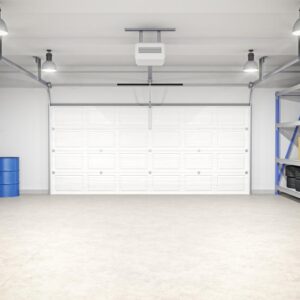Stucco exteriors have many advantages. Stucco is insulating and can make heating and cooling a home energy efficient. It can reduce outside noise, is fire retardant and can last for decades, if you maintain it. Cracks and holes must be fixed as soon as they are noticed to keep the structural integrity of your stucco siding intact. Learn how to fix stucco cracks and holes with these tips and techniques and ensure your stucco siding is a lasting part of your home’s curb appeal.
How to Repair Stucco Cracks
Small, thin cracks in your stucco wall can be easily fixed with exterior latex paintable caulk. Choose a caulk color that is close to your stucco color. You may not find an exact match, but something close to it. If need be, you can touch up the caulked area with an exterior paint that matches your stucco color. Follow the caulking tips below for the best results:
- Use a utility knife to cut the nozzle of the caulk at a 45-degree angle, and place the caulk in a caulking gun. Puncture the internal foil patch at the base of the nozzle with a nail or other slender sharp object.
- Hold the caulking gun at a 45-degree angle parallel to the crack being filled and pull the nozzle along the crack. Don’t push it. Position the nozzle opening so that it forces sealant onto the crack.
- As you finish applying each bead of caulk, release the trigger and pull back on the caulking gun rod to stop the flow of caulk and relieve the pressure inside the tube. Releasing the trigger alone will not stop the caulk from flowing out of the nozzle.
- Let the caulk set for the manufacturer-recommended amount of time.
For cracks larger than a ¼” or so, fill the crack with premixed stucco patch and a small putty knife. Allow the stucco patch to set for the a mount of time recommended by the manufacturer. You may need to apply a few layers of the stucco patch to adequately fill the crack and make the patch flush with the surrounding stucco surface. Follow all instructions.
How to Repair Stucco Holes
Step 1: Remove Broken and Crumbling Stucco
Remove loose pieces of stucco first before you repair holes and crumbling sections of stucco. Chip it away using a hammer or with a hammer and chisel. Remove all broken stucco down to the metal mesh covering the lath underneath. Clean the area with a wire brush to remove loose debris and dust.
Safety Alert!
Wear work gloves and safety glasses while removing broken stucco to avoid injury from flying debris.
Step 2: Inspect/Replace Metal Mesh
Check the metal mesh underneath the removed stucco for any damage or rust. If it looks like it is in good condition, you can use it to apply your new stucco. Otherwise, remove the old mesh by cutting it with metal snips. Apply new metal mesh. Measure a piece of galvanized metal mesh and cut to size. Affix it to the area using galvanized roofing nails driven into the wood lath underneath.
Step 3: Mix Batch of Stucco
Mix together a batch of stucco mixture using a large bucket or wheelbarrow, following all manufacturer instructions. Try not to make more than you can use in a 20-minute span because the stucco will begin to dry out and will not adhere properly to the metal mesh. Wet the patch area with water from a spray bottle. This will help the new stucco adhere and blend well with the old.
Safety Alert!
Wear gloves or avoid touching fresh stucco with your bare fingers to avoid the alkalis in it that can irritate skin.
Getting your new stucco to match your existing stucco surface may be tricky. You can tint your stucco mix to closely match your old stucco. Use a liquid stucco/mortar colorant in small batches of stucco and then apply the stucco to a piece of cardboard and let it dry to test how closely it matches. Follow all manufacturer instructions for the best results. The colorant is usually added to the water you use to combine with the dry stucco mix.
Step 4: Apply Stucco
Apply a ¼” layer of stucco to the metal mesh using a masonry trowel until the mesh is completely covered. After a few minutes, when this layer has hardened and looks fairly dry, score the surface with a series of X patterns, using the edge of your trowel. These scratch marks will help the next coat adhere better. Cover the area with plastic sheeting and painter’s tape to keep it from drying out and let the layer cure until it is sufficiently rigid enough to resist cracking, the pressures of the second coat application and the leveling process.
After the first layer has cured, mix another batch of stucco and apply another ¼” layer using the same process as the first. Allow it to cure as you did with the first layer, covering it again with plastic so it doesn’t dry out.
Before applying the final layer, mist the area with water from the spray bottle. Apply stucco mix again using a finishing trowel—be sure the patched area and the surrounding stucco are flush and blended well. While the final layer is still slightly wet, texture it to match the existing stucco using a wadded up, damp cloth or sponge to create the distinctive, stippled appearance of stucco. Let the final layer set for the amount of time specified on the package.
Step 5. Paint (Optional)
Paint your entire stucco exterior after you have repaired it, if you couldn’t match your new stucco to the existing stucco, or if your stucco needs a new color update.
When painting exterior surfaces, it is recommended that you use latex paint because it provides better fade resistance, flexibility, chalk resistance and adhesion. When you’re painting stucco, brick or concrete, you should first prime the surface with True Value EasyCare Ultra Premium Exterior Primer/Sealer, then paint with True Value EasyCare Ultra Premium Exterior Masonry/Stucco Paint. Painting stucco calls for a roller cover with a nap that’s at least 1”. Buy heavy duty, 5-wire roller frames and extension poles that are metal, for maximum strength to get paint into the crevices and pores of the stucco. For brushwork, use professional-grade paintbrushes with wood handles and synthetic bristles. These provide the best results when using latex paint.
For more in-depth stucco painting details, see the project How to Paint Stucco & Other Rough Exteriors.
Great work! Now that you know how to repair stucco, your home’s long-lasting curb appeal is assured.
Project Shopping List
Here’s what you’ll need to complete this project successfully.
- Exterior latex paintable caulk
- Utility knife
- Caulking gun
- Premixed stucco patch
- Small putty knife
- Hammer
- Chisel
- Wire brush
- Work gloves
- Safety glasses
- Metal snips
- Galvanized roofing nails
- Stucco mix
- Large bucket
- Wheelbarrow
- Spray bottle
- Liquid stucco/mortar colorant
- Masonry trowel
- Plastic sheeting
- Painter’s tape
- Finishing trowel
- Cloth or sponge
- EasyCare Ultra Premium Exterior Primer/Sealer
- EasyCare Ultra Premium Exterior Masonry/Stucco Paint
- 1”-nap roller cover
- Heavy duty, 5-wire roller frame
- Metal extension
- Paintbrushes












